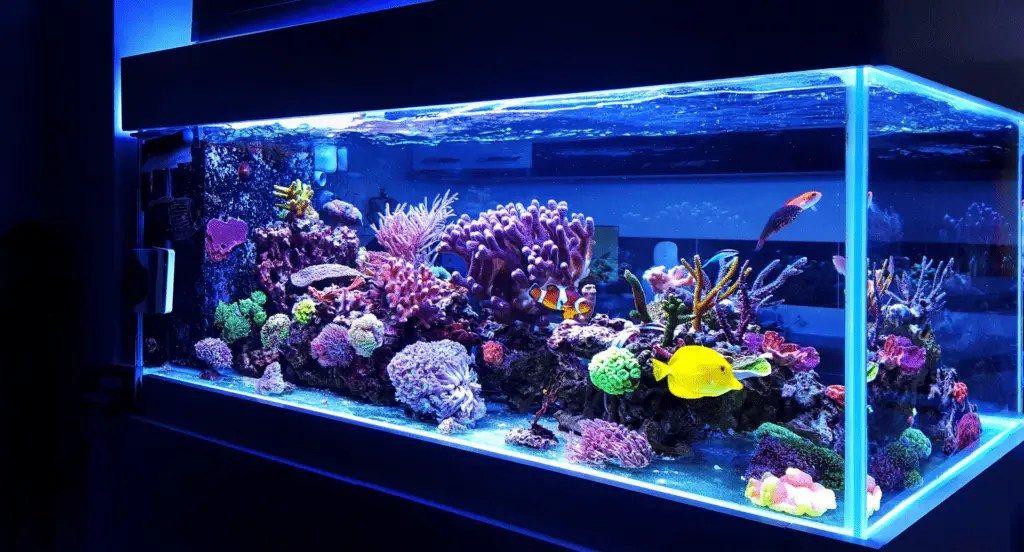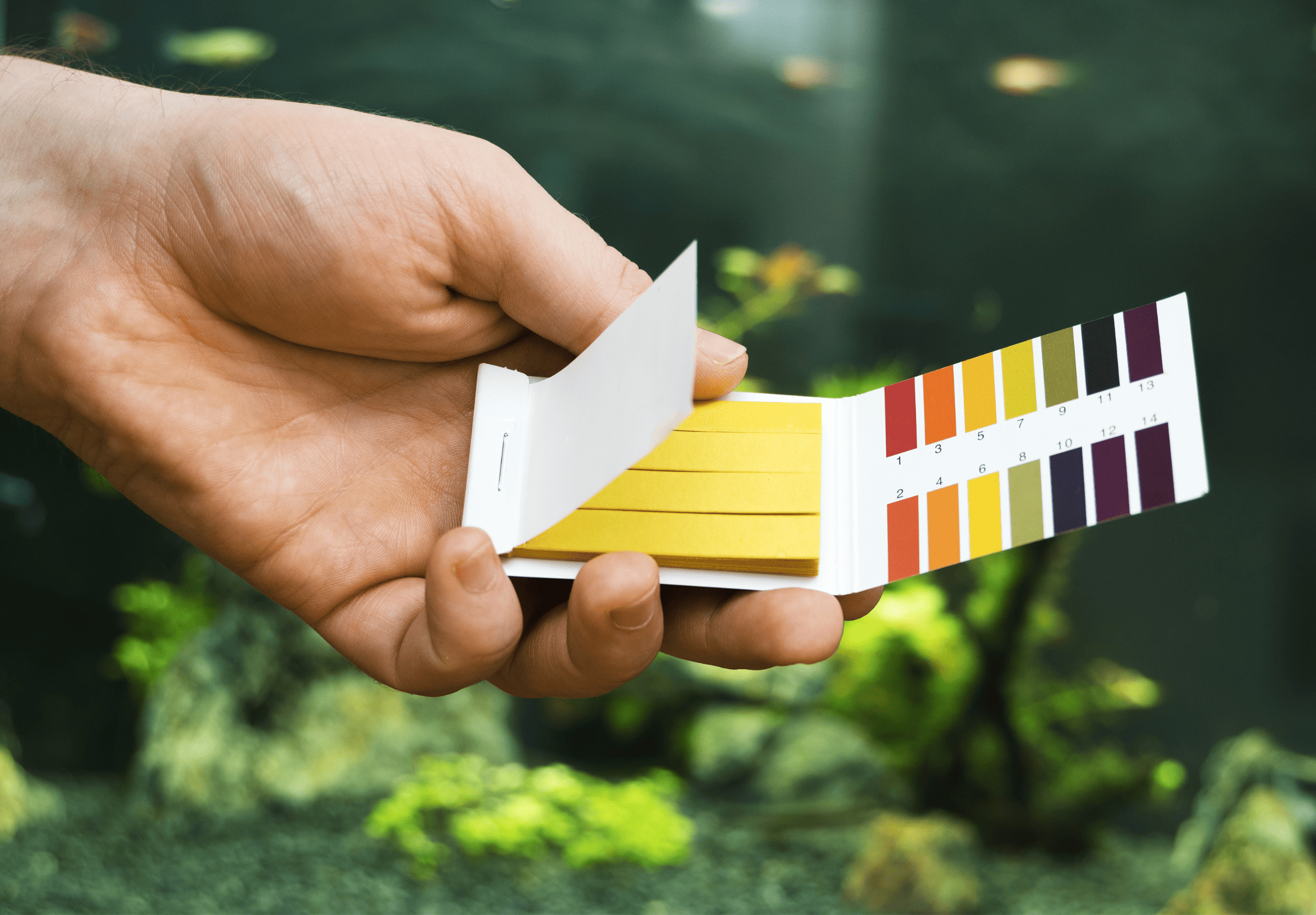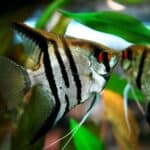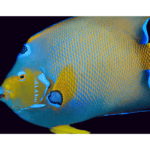Keeping the pH level balanced in your fish tank is critical for maintaining a healthy aquatic environment. Sudden fluctuations can cause stress to your fish and may lead to illness or even death. This guide provides comprehensive steps on how to lower the pH in a fish tank effectively and safely.
Understanding pH Levels
The pH level is a measure of acidity or alkalinity in a water-based solution. It’s a scale ranging from 0 to 14, with 7 being neutral.
In the context of a fish tank, different species thrive at different pH levels. For example, angelfish prefer a pH level of 6.5-7.5, while guppies thrive at 7.0-7.2.
Signs of High pH Levels
Fish communicate their discomfort indirectly.
If you notice your fish gasping at the surface, their gills moving rapidly, or a decrease in their activity level, these can be signs of high pH.
Excess algae growth is another indicator, as algae thrive in alkaline conditions.
Testing the pH Level
Before you can adjust the pH, you need to know what level it’s at.
For this, you’ll need a pH test kit or digital pH meter. These tools are as easy to use as dipping a strip into the water or placing the meter’s probe into the tank.
| Type | Pros | Cons |
|---|---|---|
| Test Kit | Cheap, Easy to use | Less accurate |
| Digital Meter | More accurate, easy to read | More expensive, needs calibration |
Here’s a cheap test kit that we’ve used on many occassions and works pretty well:
- Contains one (1) API PH TEST KIT 250-Test Freshwater Aquarium Water pH Test Kit, including 1 bottle of testing solution, 1 color card and 1 test tube with cap
- Helps monitor and adjust pH and prevent invisible water problems that can be harmful to fish
- Accurately reads pH 6.0 - 7.6 and helps avoid fish loss
- Because different geographies have different tap water conditions, and different fish need different pH levels to be healthy, API helps measure pH levels & detect pH fluctuation caused by fish waste, uneaten food and addition of tap water.
- Use for weekly monitoring and when water or fish problems appear
Also, here’s a digital meter / thermometer combo that we’ve heard works well:
- MEASURING RANGE: 0.00~14.00pH and 0~55°C (32~131°F) Temperature with ATC so temperature change can't affect on pH level measurement.
- APPLICATIONS: Great for student, professional and even personal used in achieving the correct pH and temperature level in water quality monitoring and analysis.
- FEATURES: Separate electrode to avoid contamination, composed of replaceable BNC type electrode and fixed temperature probe
- POWER SUPPLY: 4 x 1.5V AG13 button battery or 6V DC power adaptor ideal for continuous monitoring
- ATC: Automatic Temperature Compensation ensures precise pH measurements regardless of temperature changes, ideal for lab, agriculture, and water analysis.
How to Lower pH Levels
There are several methods to lower pH levels.
However, remember that rapid changes can stress your fish. It’s better to make adjustments gradually.
Peat Moss
Peat moss naturally releases tannic and humic acids, which can reduce the pH level.
Imagine this like making a cup of tea. The peat moss “steeps” in the water, gradually altering the pH.
Add the peat moss to a mesh bag and place it in your filter or directly in the tank.
Driftwood
Like peat moss, driftwood releases tannic acid into the water.
It’s like a slow, consistent drip of acidity, lowering the pH over time. Plus, it adds a natural element to your aquarium’s decor.
However, ensure the driftwood is suitable for aquarium use to avoid harmful effects.
Incorporating Live Plants
Aquarium plants aren’t just for decoration.
Picture them as the ‘lungs’ of your aquarium. They take in carbon dioxide and release oxygen, helping to balance the pH.
Moreover, some plants, such as Amazon Sword and Java Fern, can absorb certain minerals, thus contributing to a lower pH.
pH Adjusting Chemicals
Several aquarium products can lower pH levels. These products act as a sort of “magic potion,” instantly altering the water chemistry.
They’re quick and easy, but remember that rapid changes can be stressful for your fish. Always follow the manufacturer’s instructions to ensure safe use.
Here’s a good one (this company also offers a ‘pH Up’ version as well if you need to increase your pH level for some reason):
- For freshwater aquariums
- Lowers pH levels
- Safe for fish and plants
Considering the Source Water
Before changing the pH, take a moment to consider your source water.
Think of it as the foundation of a house. If your foundation is faulty, the whole structure may be compromised.
Tap water often has a pH above 7. If you’re aiming for a lower pH, using distilled or reverse osmosis water for changes or top-offs can help.
Using Natural pH Buffers
Natural buffers can be like the ‘shock absorbers’ of your aquarium’s pH level. They absorb excess acidity or alkalinity, helping to maintain stability.
Adding Indian almond leaves or alder cones can gradually decrease pH levels. These items release tannins into the water, just like peat moss and driftwood, helping to buffer the pH.
Balancing pH with Carbon Dioxide (CO2) Systems
If you’re a bit more tech-savvy, consider a CO2 system.
Imagine a soda maker. Just as the machine infuses water with carbon dioxide to make it fizzy, a CO2 system adds CO2 to your tank, reducing the pH.
However, you’ll need to monitor the system closely to prevent drastic changes.
Ensuring Stability Over Time
Lowering the pH is not a ‘set it and forget it’ process.
Think of it like a gardener tending to his plants. Regular care is required to maintain a healthy environment.
Regular testing and gradual adjustments are key to ensuring a stable, healthy pH level in your aquarium.
Conclusion
Navigating the pH levels of your aquarium can seem like a complex dance. Yet, with the right steps and rhythm, you can maintain a balance that ensures the health and happiness of your aquatic pets.
The steps outlined in this guide should help you lower the pH in your fish tank effectively and safely. Remember, regular monitoring and patience are essential in this process.
And just as a good dance partner responds to the music, you, as an aquarist, must respond to the needs of your aquatic life, leading them towards a thriving, vibrant existence.

Frequently Asked Questions
What is the ideal pH for my fish tank?
Different species of fish thrive in different pH levels. Tropical freshwater fish generally prefer a pH of 6.5-7.5, while many marine species require a pH closer to 8. Research your specific species for best results.
Can high pH levels kill fish?
Yes. High pH levels can cause stress, disease, and even death. It’s crucial to maintain a consistent, appropriate pH level for your specific fish species.
How often should I test my fish tank pH?
Ideally, test your pH levels once a week. However, if you’re adjusting the pH or have recently set up a new tank, daily testing is recommended until stability is achieved.
Can I use vinegar or lemon juice to lower the pH?
While vinegar or lemon juice can technically lower the pH, they are not recommended for use in aquariums. These substances can cause rapid, unsafe changes in pH and are not stable over time.
Does boiling driftwood help lower pH?
Boiling driftwood can help to release tannins faster, which can lower the pH. However, it also might cause the wood to break down quicker.
Does the size of the fish tank affect the pH?
Yes, in a way. Larger tanks often have more stable pH levels because there’s more water to buffer changes. However, the care you take in maintaining the tank is far more important than its size.
Why does my pH keep rising even after I lower it?
The culprit could be the buffering capacity (also known as alkalinity or KH) of your water. High alkalinity can resist pH changes, causing the pH to rebound after being lowered. Testing and adjusting the alkalinity of your water may help.
Can I lower the pH by adding more fish?
Adding more fish can contribute to lower pH levels over time due to the production of waste. However, you should never overstock your aquarium. This can lead to numerous other health issues for your fish.
Can I use rainwater to lower pH?
While rainwater typically has a slightly acidic pH, it can also contain pollutants or pathogens. It’s generally safer to use treated tap water or specialty aquarium water.
Is it necessary to lower pH for all fish?
Not all fish require lower pH levels. Some, such as African Cichlids, thrive in alkaline conditions. Always research the specific requirements of your fish species.









